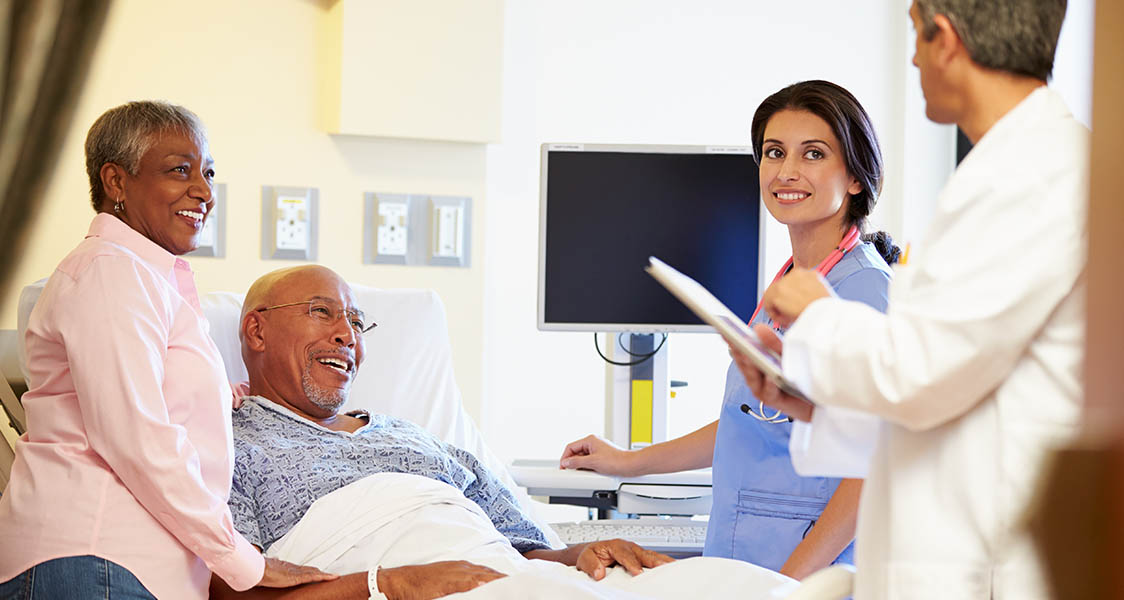“Americans suffer a stroke once every 40 seconds, with more than 750,000 new strokes each year.”[1]
That’s a remarkable statistic and shows how frequently strokes occur. And it’s not just people over 50 who are at risk – strokes can happen to anyone, even children. There’s also a strong genetic link to strokes; if someone in your family has a stroke history, you’re at greater risk.
What is a stroke?
A stroke occurs when blood stops flowing to a part of your brain. Brain cells require a constant supply of oxygen and nutrients carried by the blood, and when blood flow is cut off or restricted, brain cells can die. A person who has a stroke can have trouble walking, seeing, speaking, thinking and many other problems, depending on which area of the brain is damaged.
What causes a stroke?
Most strokes are called ischemic strokes which occur when a blood clot blocks a vessel to the brain. Ischemic strokes can also occur when a disease of the arteries narrows a blood vessel enough to restrict blood flow to the brain.
The next most common kind of stroke is called hemorrhagic stroke. This type of stroke occurs when a blood vessel in the brain breaks, and the cells normally fed by that vessel are deprived of necessary oxygen and nutrients.
Other types of strokes are:
- Transient Ischemic Attack – or TIA, when blood flow is temporarily blocked to the brain;
- Brain aneurysm, a type of hemorrhagic stroke;
- Arteriovenous malformation (AVM), an unusual tangle of blood vessels in your brain that bypasses brain cells; and
- Brain stem stroke, when blood is blocked from reaching the brain stem.
How to recover from a stroke quickly
A stroke can have a major impact on the patient’s physical, emotional, professional and personal life. To speed recovery, stroke rehabilitation should start within 24 hours – while the patient is still in a hospital bed. Starting therapy immediately takes advantage of the brain’s ability to rewire itself, called neuroplasticity.
Every stroke is different, so how long it takes to recover from a stroke is different. Therapists work with the patient to develop coping strategies, practical solutions, nutritional guidance and education to help the patient return to a productive lifestyle as soon as possible. How quickly the patient recovers depends on the stroke’s severity, which part of the brain is affected, the patient’s motivation to get well, the support of friends and family, the patient’s age and general health.
Generally speaking, the worse the stroke, the longer it will take to recover. The younger and healthier the patient was before their stroke, the more likely they are to recover quickly.
Types of therapy for stroke patients
Therapists at Good Shepherd Penn Partners work with stroke patients to develop a comprehensive plan of physical, occupational, speech and recreational therapies. Our therapists may help the patient:
- learn to walk again
- swallow or chew
- improve muscle strength and coordination
- reduce spasticity
- teach them to brush their hair
- improve their vision
- improve their thinking, memory, and social skills
- provide speech therapy
- regain their sense of smell or taste
- address any emotional problems related to the stroke
After an initial period of physical therapy, the therapy team will focus on helping the patient with activities of daily living (ADL). These everyday tasks are critical for maintaining a positive outlook and combating depression. ADL’s might consist of a work or hobby activity, cooking, cleaning, bathing, going up stairs or other tasks that were easier to perform before the stroke. The goal of therapy is to restore skills as close as possible to pre-stroke levels or to develop methods to help the patient with skills they have trouble re-learning.
How long does it take to recover from a stroke?
The majority of stroke recovery is made within four months, with slow but steady progress after that. At times, “spontaneous recovery” occurs, with the patient suddenly able to perform tasks they found difficult only a few days earlier. This sometimes happens early in stroke recovery as the brain is attempting to heal itself quickly.
Recovering from a stroke can be a mentally and physically difficult process. To speed and optimize recovery, patients must work hard at inpatient and outpatient therapy, attend all sessions and continue their exercises at home. With hard work and the right therapy, many stroke patients can fully recover within six months.
[1]S. S. Virani et al.; American Heart Association Council on Epidemiology and Prevention Statistics Committee and Stroke Statistics Subcommittee, Heart disease and stroke statistics-2020 update: A report from the American Heart Association. Circulation 141, e139–e596 (2020)

